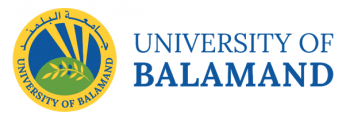 Graduate Training Position – Modeling of fatty acids phase change materials for energy storage in buildings application
Graduate Training Position – Modeling of fatty acids phase change materials for energy storage in buildings application
General Information
Title
Modeling of fatty acids phase change materials for energy storage in buildings application.
Sending Institution
University of Balamand (UOB) in Lebanon
Host Institution
University of La Rochelle (ULR) in France
Advisor(s)
Prof. Rafik Belarbi from ULR
Prof. Henri El Zakhem from UOB
Start Date
January 9, 2023
Application Deadline
November 17, 2022
Keywords
Phase Change Materials (PCMs), Buildings, Energy Storage, Comsol Multiphysics.
Profile & Skills Required
A student that has a background in materials and has the knowledge to produce, assess and characterize the mortars produced (chemical, mechanical and microstructural).
Promoting Research Work
All relevant results will be published in international journals and presented at national and international conferences. In addition, if these materials perform well, the patentability of any new results will be considered before any public disclosure.
Training Details
Description
In latent heat storage, energy is stored through the change of state of the material and then released when the material returns to its original phase [1]. Latent heat thermal energy storage systems incorporate phase change materials (PCMs) as storage materials. The high energy density of PCMs, their ability to store at near-constant temperatures, and the diversity of materials available make latent heat storage systems , particularly competitive technologies for many applications [2]. The performance of a thermal energy storage system is strongly influenced by the nature and properties of the PCMs. The first step in designing a storage system is to estimate the properties of the PCM as a function of temperature on the one hand and to study the behavior of the PCM during phase changes (energy charge/discharge cycles) on the other hand. Numerical simulation allows dimensioning of the systems to integrate PCMs in the building envelopes, and the prediction of their behavior at different scales [3].
Objectives
The objective of this training is to compare the energy performances of different fatty acids and their eutectic mixtures. First, a list of fatty acids with their thermophysical properties will be established. Their energy performances will be analyzed using Comsol Multiphysics software, considering different climate scenarios and wall configurations.
References
- Sawadogo, M.; Duquesne, M.; Belarbi, R.; Hamami, A.E.A.; Godin, A. Review on the Integration of Phase Change Materials in Building Envelopes for Passive Latent Heat Storage. Applied Sciences 2021, 11, 9305, doi:10.3390/app11199305.
- Lamrani, B.; Johannes, K.; Kuznik, F. Phase Change Materials Integrated into Building Walls: An Updated Review. Renewable and Sustainable Energy Reviews 2021, 140, 110751, doi:10.1016/j.rser.2021.110751.
- AL-Saadi, S.N.; Zhai, Z. (John) Modeling Phase Change Materials Embedded in Building Enclosure: A Review. Renewable and Sustainable Energy Reviews 2013, 21, 659–673, doi:10.1016/j.rser.2013.01.024.
Modality of the application
1. Create a student account. Click here.
2. Download the guide for applicants, application Form N°1, and application Form N°2.
3. Prepare, sign, and submit your full application online no later than November 17, 2022.
Candidates are invited to download the SWaTH Mobile App and Log In to check the updated status of their application.
Any omission or non-compliance with the instructions requested will result in the Applicant's ineligibility. Any application that does not comply with the instructions will be rejected.
